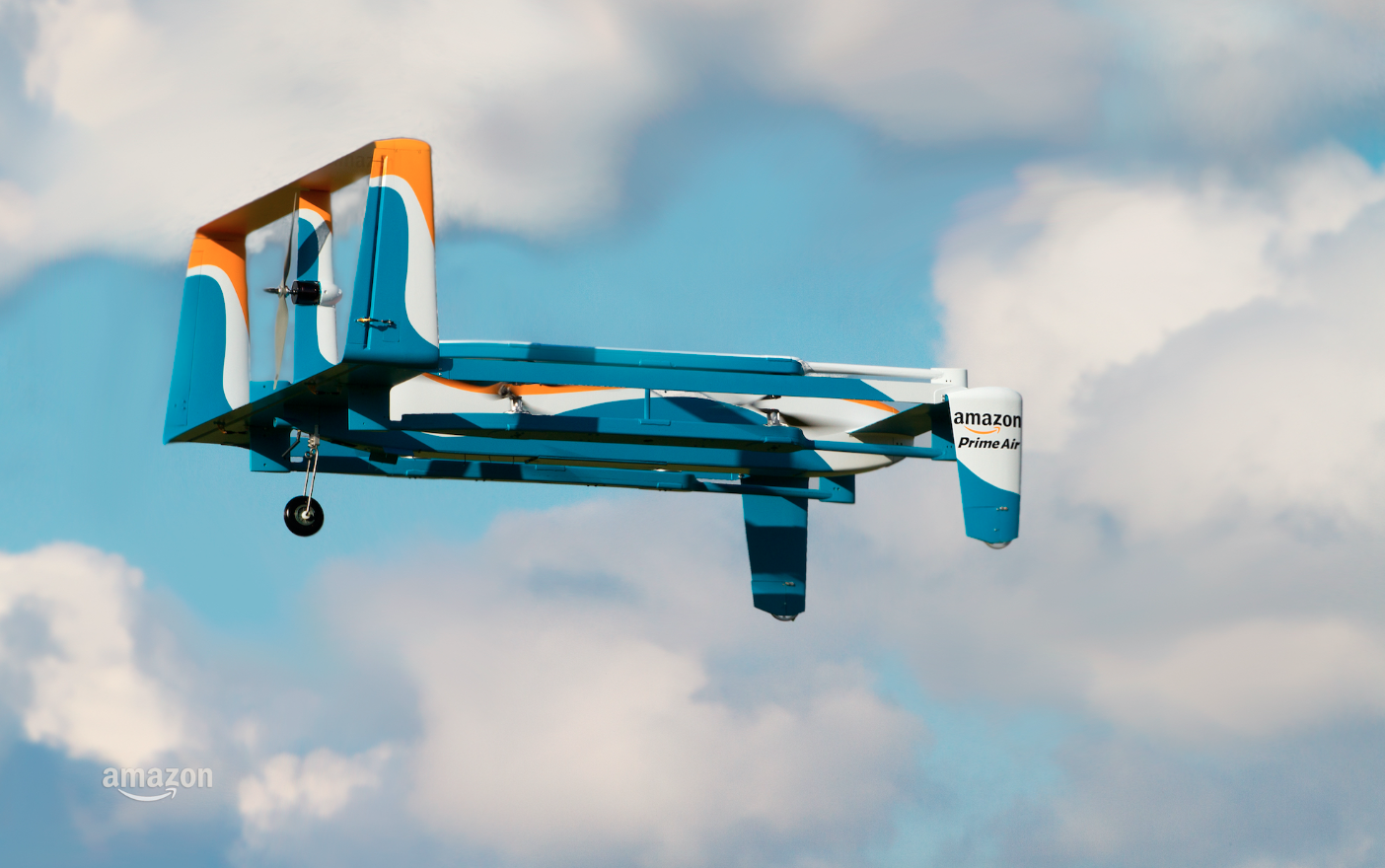Amazon delivery drones ‘to announce their arrival with pleasant tune’
Like an ice cream van from the future, Amazon's delivery drones could announce their arrival above your home by playing "a pleasant tune", according to patent belonging to the retail giant and published this week.
The patent, which was filed in June 2016, describes several options for how delivery drones could let those on the ground know where they are, and where they intend to land to make their delivery.
Read More:
- Amazon wants to keep us safe with self-destructing delivery drones
- Watch lifeguard drone save swimmers in world-first rescue mission
Amazon is currently testing delivery drones near Cambridge, in the English countryside, where the flying machines are being used to deliver small household items to two homes located just a field away from the service's distribution center. Demonstrated at the end of 2016, the trial means items arrive in the customers' gardens less than 15 minutes after an order is placed through the Amazon website.
The patent states how the UAV (unmanned aerial vehicle) could have lights and speakers to communicate with people on the ground. The drone may "announce its arrival via the lights and/or audio, such as by emitting a warning sound, a pleasant tune, or other audio that provides notification of the presence of the UAV and/or an intent of the UAV to deposit the product at the destination".
It is suggested that lights or a projector could be used to indicate where the drone wants to land. The patent describes how the drone could beam two options onto the ground below, then the customer would need to stand in the place they want it to land. The drone may also use these lights to highlight obstacles preventing it from landing, such as a dog which needs taking inside, or a lawn sprinkler which needs switching off. Bluetooth and Wi-Fi could also be used to help communicate, the patent says.
Although the idea of drones delivering goods bought online sounds thoroughly futuristic and high-tech, the patent describes some surprisingly low-tech approaches to helping them land in a safe spot. For example, the patent suggests actions performed by the customer "could involve moving to a different location, jumping, waving arms, and/or performing other physical actions". These actions would then be interpreted by the drone's onboard computer vision system.
Other low-tech techniques mentioned by the patent include the drone performing a series of maneuvers to signal its intentions, like flying in a figure-of-eight over the intended drop zone.
